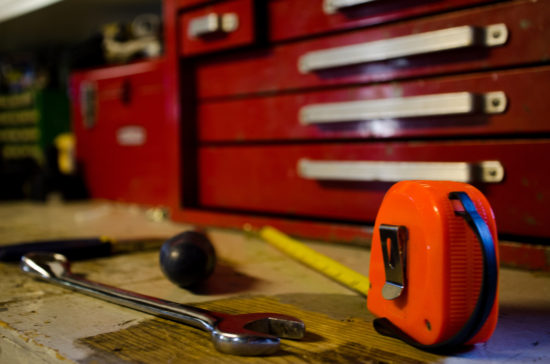
HomeAdvisor cites an increase in home equity over the past five years as a confidence booster that provides America’s homeowners with more money and the comfort level to spend – regardless of overall economic concerns. Study respondents spent an average of $5,157 on home projects between February 2016 and February 2017. Almost two-thirds (63%) intend to spend an equal or greater amount between February 2017 and February 2018.
Homeowners are also willing to take on larger projects, with such ambitious jobs as building an addition (average cost of $40,825), building a garage (average cost of $25,008), and remodeling a basement (average costs of $18,807) listed among the top ten improvement tasks by HomeAdvisor.
How will these projects be funded? The vast majority of homeowners plan to do so with cash. The study found that just less than 1 in 5 home improvement projects require alternate financing.
A surprising 45% of homeowners who will finance plan to use credit cards – a risky proposition given the relatively high interest rates and increased chances of racking up interest charges. If you can afford to put a small project on your card and pay it off at the end of the month to maximize rewards points, that’s reasonable – otherwise, there are plenty of options that may be preferable for your situation.
Jordan Goodman, a Personal Finance Expert and Author known as “America’s Money Answers Man”, suggests that while mortgages should target the maximum needed to buy a home, “if you need to do home improvements later, do that through a home equity line of credit (HELOC).” A HELOC is well suited for home improvement projects because of its relative flexibility and generally lower interest rate. HELOCs were the choice of 22% of study participants planning to finance their projects. For more information, read the entire HomeAdvisor’s True Cost Report.
If your mortgage terms are poor compared to currently available rates, or you planned to refinance anyway, you can simply fold the increased borrowing for home improvement plans into a standard mortgage refinancing. MoneyTips is happy to help you get free refinance quotesfrom top lenders. Otherwise, a HELOC may be preferable. As Goodman puts it, “You don’t want to be paying for thirty years on home improvements.”
Home equity loans offer another path for home improvement financing. They are similar to HELOCs in that you are borrowing against the equity in your home, but a home equity loan has a fixed borrowing amount and payment schedule just as your mortgage does. You may prefer a home equity loan for simplicity in budgeting.
Traditional bank loans and construction loans are reasonable alternative options for larger projects that will cost more than the equity you have in your home. You will have to evaluate your loan offers to see how the interest rates and terms compare with the refinancing path, since HELOCs and home equity loans would not apply here.
In some cases, a contractor will arrange financing for you if they already have a standing relationship with a finance company – but these are usually done for convenience and not for economics. Inserting a middleman into any process rarely produces lower cost.
Your ability to borrow is based on your credit score. You can check your credit score and read your credit report for free within minutes using Credit Manager by MoneyTips.
If you plan to join the home improvement trend, we wish you well regardless of how you plan to finance your project. Verify that your project is well planned and outlined before you begin, make sure that you find the financing that works best for your situation, and avoid changing your mind halfway through the project.
If you are interested in refinancing your home loan, MoneyTips is happy to help you get free refinance quotes from top lenders.
This article was provided by our partners at moneytips.com. You may also like:
- What Home Improvements Add Value?
- Got Debt? Save On Interest Payments
- Video: Don’t Make Home Improvements Using Your Mortgage Loan
Photo: Julien Dumont
Alexa Mason is the blogger behind Single Moms Income, a personal finance freelance writer, and an online entrepreneur. Come hang out with her on Facebook and Pinterest.
Comments